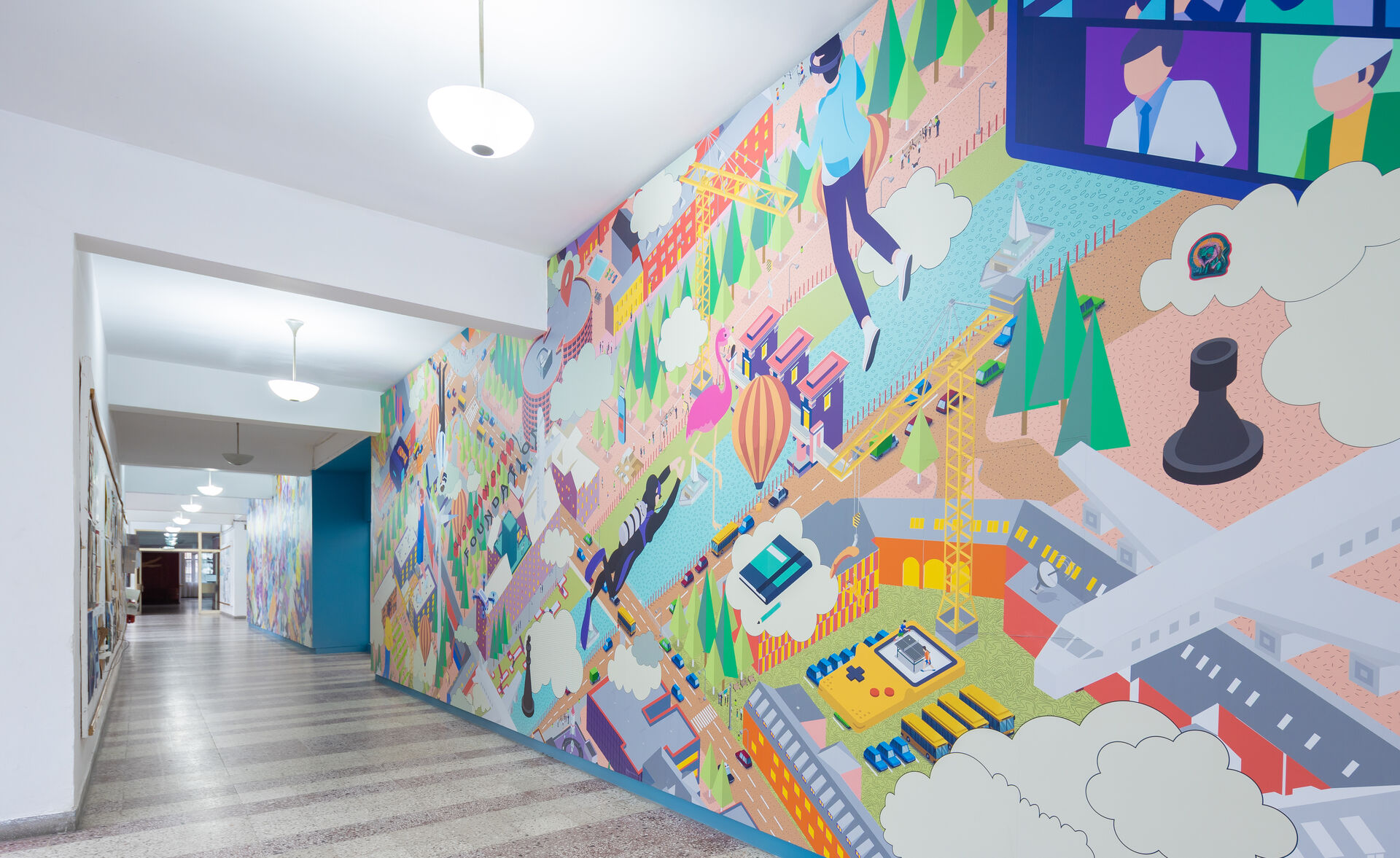The main building of the “Ion Mincu” University of Architecture and Urbanism is located in Bucharest, on 18-20 Academiei Street. This building includes the offices of the Senior Executive Team and the Senate, most of the teaching spaces (classrooms, studios, laboratories), the main halls, the library, the gym, the administration offices, and the offices of the academic staff.

The present building is the result of several extensions of the original building, erected between 1916 and 1927 following the design of Grigore Cerchez and registered as a historical monument. The extensions were built in the 1960s and ’70s. The building complex (covering a built area of around 27068 square meters) occupies the whole block between Academiei, Edgar Quinet, and Biserica Enei streets.
Recently renovated classrooms feature new furniture and modern projection equipment.

UAUIM features several laboratories furnished with modern equipment and software, according to their purpose:

On the ground floor, facing Academiei Street, there is a generous exhibition space that houses student work exhibitions, as well as prestigious architecture and art exhibitions.


On the underground floor of the university building, there is a cafeteria, a stationery shop, a bookstore, an UAUIM-run plot-and-copy center, and an additional copy center.

The gym within the university building has been recently renovated and refurbished. At 2 Larisa Street, the University has a stadium and a swimming pool.

The “Ion Mincu” University of Architecture and Urbanism houses the oldest and most complex specialized library in the country, founded in 1912 through donations of the first professors of the school. Among the first donations are the personal collections of architects and engineers such as Ion Mincu, Grigore Cerchez, Paul Smărăndescu, or Ermil Pangratti – the first rector of the school. Presently, the library encompasses around 200.000 publications in the fields of architecture, constructions, urbanism, design, art, history, philosophy, sociology, mathematics, and so forth. The library has two newly equipped reading rooms.
UAUIM Academic Publishing House, founded in 2001, publishes works directly connected to academic activity (textbooks, lectures summaries, documentations), architecture and urbanism works authored by the teaching staff, works authored by students (project catalogs, research, and so forth), as well the journal SITA, ARGUMENT, JULP). The development of publishing activity is supported by the recent furnishing of the printing house with new and highly efficient equipment.

Founded in 1982, the UAUIM museum features objects and documents that are representative for Romanian architectural education (the diplomas of the first Romanian architects, official documents concerning architectural education, various documents of the Higher School of Architecture, projects designed by the students of the school and so forth), as well as other items connected to the evolution of architecture: models of famous monuments and buildings, fragments of architectural decoration and wrought iron salvaged from the politically-motivated demolitions of the 1980s and so forth.

The Bachelor Degree course “Architectural Conservation and Restoration” is hosted in a historical building located in the central area of Sibiu, in Transylvania County. More information: https://www.uauim.ro/en/faculties/architecture/conservation/

Additionally, based on a commodatum agreement, UAUIM uses the complex of the fortified church in Dealu Frumos - Schonberg (near Sibiu, Transylvania County), an XIII-XVII-th century complex registered as a historical monument, where the UAUIM Study Center for Vernacular Architecture is located; there, various academic, professional and cultural events, including international workshops and student camps, take place. A historic house in the same village was recently acquired by the University and is currently undertaking rehabilitation works which will lead to the creation of new accommodation spaces.